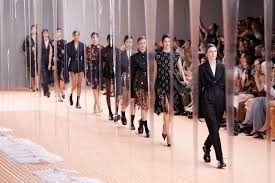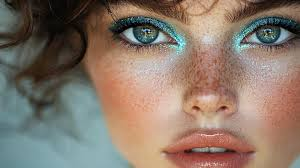The Ever-Evolving World of Fashion: Trends, Personal Style, and Sustainability
Fashion is much more than just clothing; it's an expression of who we are, where we come from, and where we're going. Whether it's through the timeless elegance of a little black dress, the boldness of streetwear, or the craftsmanship of couture, fashion speaks volumes without saying a word. As we navigate through 2024, the fashion industry continues to evolve, introducing new trends, redefining old ones, and increasingly leaning into sustainability and personal expression.
In this blog, we'll explore the latest trends, the importance of developing personal style, and why sustainability is becoming a key factor in shaping the future of fashion.
1. Current Fashion Trends for 2024
Fashion is always in flux, with each season bringing fresh ideas, innovative designs, and new ways of mixing and matching. 2024 is no exception, offering an exciting blend of nostalgic looks, tech-infused apparel, and a strong focus on comfort.
Bold Colors and Prints: In 2024, vibrant hues and eye-catching prints are making a huge comeback. Think of bold primary colors, neon accents, and graphic patterns. From neon pinks and bright oranges to abstract patterns, 2024 fashion is all about standing out and making a statement.
Tailored Yet Comfortable Pieces: The trend for 2024 emphasizes clothing that combines comfort with structure. Think oversized blazers, wide-leg trousers, and midi skirts, which offer a relaxed fit without sacrificing style. The ongoing love for athleisure also continues to influence daily wear, blending elements of sportswear with tailored designs.
Sustainable Fabrics: Eco-conscious fashion is no longer just a trend but a movement. Designers are increasingly opting for sustainable fabrics like organic cotton, bamboo, hemp, and recycled materials. These fabrics not only reduce environmental impact but also offer comfort, durability, and style.
Gender Fluidity: Fashion in 2024 embraces the idea that clothing doesn't have to have a gender. Unisex designs, gender-neutral colors, and inclusive sizing are central to the collections from both mainstream and independent brands. It's about wearing what feels right for you, regardless of traditional gender norms.
2. The Power of Personal Style
While trends offer inspiration, personal style is what truly sets us apart. It's not about chasing every trend but about cultivating a wardrobe that reflects who you are. Whether your style is minimalist, boho, edgy, or classic, personal style allows you to show the world your uniqueness.
Discover Your Signature Pieces: The foundation of any personal style is having a few signature pieces. These could be anything from a favorite pair of jeans, a timeless leather jacket, or a pair of statement shoes. These pieces become part of your fashion identity and allow you to create endless outfits while staying true to your personal aesthetic.
Mixing Trends with Timeless Pieces: It's essential to strike a balance between staying on top of trends and investing in timeless, high-quality pieces. Trendy items like oversized sunglasses or chunky sneakers can inject fun into your wardrobe, but investing in classic items such as a well-fitted blazer, a little black dress, or a great pair of boots will ensure that your closet remains versatile and enduring.
Expressing Yourself: Fashion should never be a uniform. It's a canvas for your mood, personality, and creativity. Don't be afraid to experiment with different looks and embrace what makes you feel confident. Whether you prefer mixing patterns or keeping things monochrome, your style is your own.
3. Sustainability in Fashion: The Future is Green
As the fashion industry grapples with its environmental impact, sustainability has become a major conversation in 2024. From the materials used to the production processes, consumers are increasingly concerned about how their clothes are made and the consequences of fast fashion.
Sustainable Fabrics and Materials: As mentioned earlier, sustainable fabrics like organic cotton, Tencel, and upcycled materials are making waves in the industry. These fabrics are not only better for the planet but often offer superior comfort and durability. Recycled polyester, for instance, is made from post-consumer plastic bottles, reducing waste and conserving resources.
Ethical Production: Many consumers are now looking beyond the aesthetics of clothing and are considering where and how the clothes are made. Brands that focus on fair wages, safe working conditions, and environmentally-friendly manufacturing processes are leading the charge toward ethical fashion. Many designers and brands are also using local production to minimize their carbon footprint.
Slow Fashion: Slow fashion is about quality over quantity. It emphasizes purchasing fewer but better-quality items that last longer. Rather than constantly chasing the latest trends, slow fashion encourages you to invest in pieces that can be worn season after season. Thrift shopping, upcycling, and swapping clothes are also part of this movement, offering sustainable alternatives to buying new.
The Rise of Rental and Secondhand Fashion: The popularity of clothing rental services and secondhand fashion is on the rise. Renting clothing for special occasions or swapping clothes for a fresh look is a great way to reduce waste while still enjoying variety in your wardrobe. Platforms like Depop, Poshmark, and Rent the Runway are making it easier to access a wide range of stylish, pre-loved clothing.
4. Fashion Influencers and Social Media: Shaping Trends
In the age of social media, influencers have an undeniable impact on fashion trends. Instagram, TikTok, and Pinterest are powerful platforms where fashion bloggers, celebrities, and everyday people showcase their style, influencing millions of followers.
Authenticity Matters: In recent years, there's been a shift from perfectly curated feeds to more authentic, relatable content. Consumers now value realness over unattainable perfection. Fashion influencers who embrace body positivity, diversity, and inclusivity are changing the narrative around beauty and style.
Micro-Trends: Social media also fuels micro-trends—smaller, niche trends that spread rapidly across platforms. From quirky accessories to vintage pieces, these micro-trends allow for individualism and experimentation. While they may be fleeting, they provide fun and fresh ideas for anyone looking to diversify their wardrobe.
Fashion as a Form of Expression
Fashion will continue to evolve in 2024 and beyond, offering new ways to express individuality while also embracing sustainability and inclusivity. While trends come and go, the key to true style is personal expression and creating a wardrobe that makes you feel empowered. As the fashion industry becomes more aware of its environmental and social responsibilities, it's up to consumers to drive positive change by supporting brands that prioritize sustainability and ethical practices.
So, whether you're embracing the latest trends or creating your own fashion identity, remember that style is ultimately about confidence, comfort, and authenticity. Fashion is a way to express who you are—make it your own!








